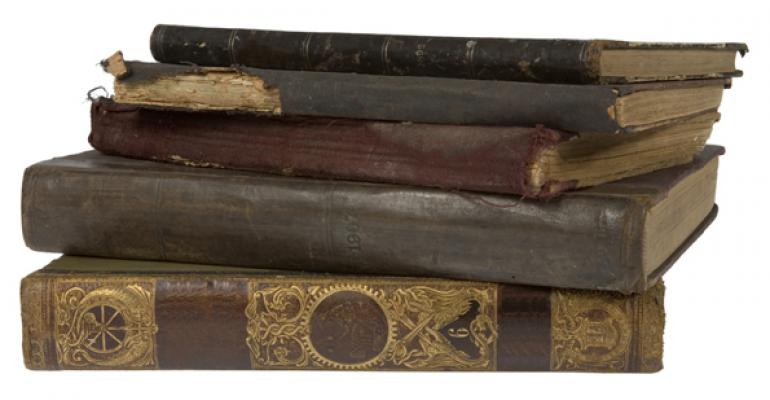Often, the owner of rare memorabilia is unaware of the current market value of this significant estate asset, leaving his CPA, estate planner and/or trust attorney in the dark. In dealing with rare books and documents, as with fine art, there are definite procedures for determining valuation. Where tax issues are involved, the Internal Revenue Service’s own appraisal staff reviews valuations, with some subject to further review by the Art Advisory Panel, a group of 25 volunteer experts. In 2010 the panel reviewed 475 estate tax items, valued at a total of $235 million, and recommended adjustments on more than half of them, with a 43 percent increase in the undervalued items in estate and gift appraisals.1
When you are valuing an item for purposes of insurable loss, the model used is, “replacement value,”2 which is defined as: The amount it would cost to replace an item with one of similar and like quality purchased in the most appropriate marketplace in a limited amount of time.
The process used when valuing for purposes of a tax deduction and/or estate valuation is “fair market value,” (FMV)3 which is defined as: the price at which property would change hands between a willing buyer and a willing seller, neither having to buy or sell, and both having reasonable knowledge of all the relevant facts.
In a real setting, the replacement value is normally based upon the more immediate retail backdrop and is substantially higher than that gleaned from the sophisticated private dealer or auction transaction.
Within these models lie the concomitant vagaries of subjectivity. To what degree is the ultimate value effected by author, author plus content (or purpose), content alone or scarcity, with all dependent upon condition? The answer is a combination of all of the above. The John Carroll University in Cleveland, Ohio recently received an iconic collection of Lincolniana, rare books and documents signed by or relating to Abraham Lincoln. The university sought replacement value for insurance purposes while the donor sought a fair market value determination for personal tax use.
WHERE THE MODELS PRODUCE DIFFERENT VALUES
The documents in the aforementioned collection include a Draft Order for Ohio’s 11th District, a classic Civil War document with the president’s full signature that affected the lives of 621 souls. This item has: author, content, rarity and is in exceptionally fine condition and is valued for timely replacement purposes, as currently offered at retail, at a price in the 6 figures but, the FMV for donation tax credit is over 33 percent less. In this case, the lesser FMV was determined by taking note that a sophisticated museum director, who constantly scours the market, had previously purchased a similar document and reported paying much less than the current asking price at a popular and respected dealer. This FMV result is that of a willing buyer and a willing seller with time on their side and no pressure to act.
WHERE THE MODELS DIFFERENCE IS BLURRED
Another item is a political lithograph (20 in. by 25 in)., featuring the bust portraits of the first 16 presidents, printed to honor Lincoln’s first inauguration. This political memorabilia became very difficult to sell in 1861, owing to Lincoln’s changed appearance. He had a newly grown beard. Many copies were simply distributed by the printer and left to deteriorate. Here is an obtainable item whose collectability is dependent upon condition. With many pieces available at varying levels of quality, the market is broad, requiring buyers to rely on reputable dealers for condition assessment and authentication, causing the difference in valuation for replacement value and FMV to be blurred.
WHERE THE DIFFERENCE IN MODELS SEEMS NOT TO EXIST
Moving to rare books, the collection included a book that combines singular rarity and great purpose. This book is an unusual soldier's autograph album, owned by a corporal from the first Rhode Island Volunteers. The signatures of Scott, Burnside and Sprague, at average, for the collector, command a reasonable price. However, the rare, full signature of Abraham Lincoln, in the context of an autograph album for a Union Army non-commissioned officer, two months after the start of the conflict, suspends convention and sets this album apart from the ordinary. It’s clear to me that the President meant this autograph, along with those of his generals, as a meaningful gesture to the common soldier under his command. It’s with this fact in mind, that I determined the standard minimum value of this full signature, as well as the others, and then valued them contextually, as a rare and meaningful collection, at a two times multiple of the signatures alone. In this case there is no known replacement and, as such, there can be no difference between fair market and replacement value.
Finding the proper market, within the models, for specific rare books and documents determines their eventual valuation. Although, by definition, appraisals are subjective, they rely upon an established process that requires research, factual support and dialogue with a combination of experienced dealers and authorities.
End Notes
1. Art Advisory Panel of the Commissioner of Internal Revenue, Annual Summary Report, www.irs.gov/pub/irs-utl/annrep2010.pdf
2. All About Appraising: The Definitive Appraisal Handbook, Appraisers Association of America, pg 34
3. P526, pg.10, Determining Fair Market Value





